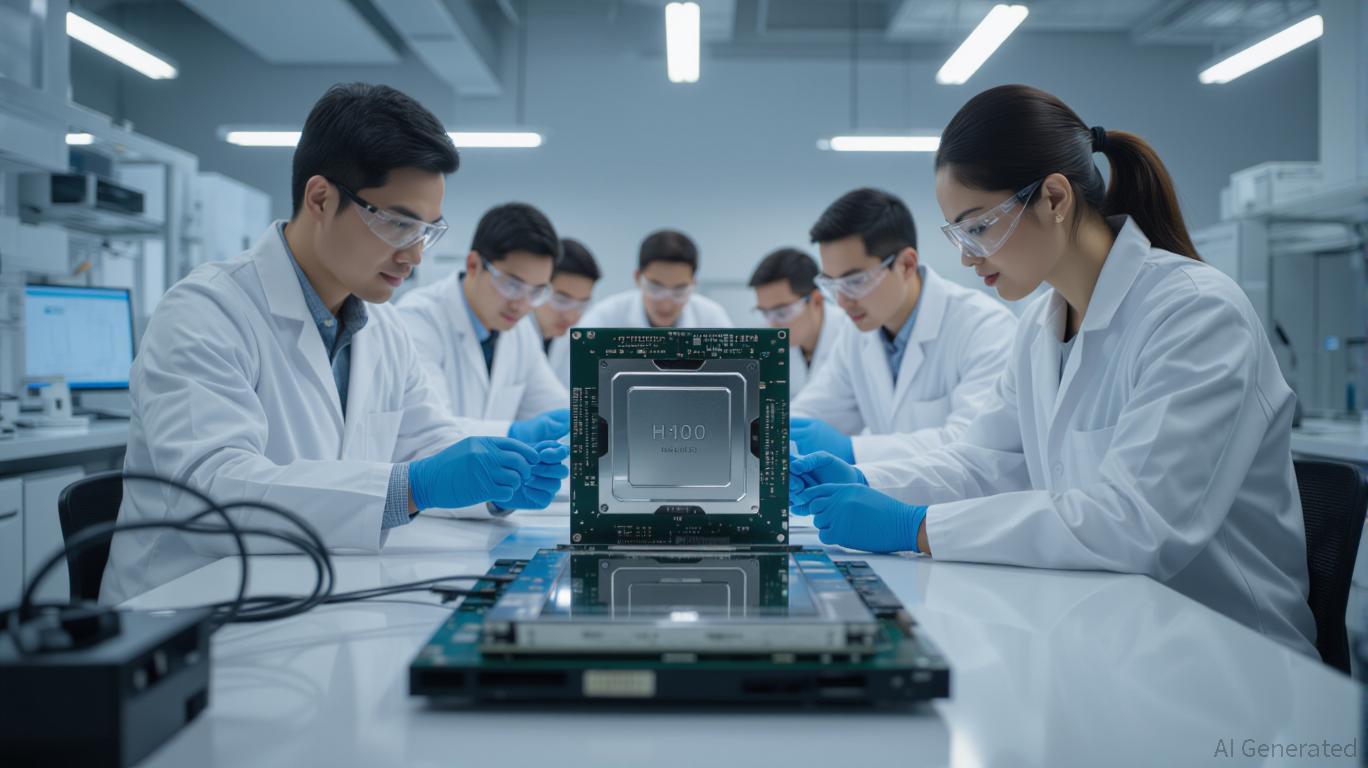The AI Infrastructure Barbell: Why NVIDIA, Broadcom, and EDA Leaders Are the Pinnacle of the AI Decade
The AI revolution is not just about flashy models or algorithms—it's about infrastructure. As
Sachs' “barbell” strategy illuminates, the companies building the hardware and software ecosystems to power this shift are the true beneficiaries of a $350 billion+ AI capital expenditure (CapEx) wave. This article dissects why , , and EDA leaders and are structurally positioned to dominate the AI decade, despite near-term volatility.The Barbell: Performance Leadership + Cost Efficiency
Goldman's thesis hinges on two pillars:
1. Performance Leaders with superior software ecosystems (e.g., NVIDIA)
2. Low-Cost Custom Silicon Enablers (e.g., Broadcom)
These categories form a moat around AI infrastructure, as hyperscalers (Google,
, Amazon) and enterprises shift from experimentation to monetization. With AI inference market growth set to explode over the next five years, the barbell players are the only ones capable of delivering both cutting-edge performance and cost-effective scale.NVIDIA: The AI Software Stack Monopoly
NVIDIA's dominance isn't just about GPUs—it's about its end-to-end software stack. Its CUDA platform, AI training frameworks (e.g., H100/H800 chips), and partnerships with hyperscalers create a flywheel effect: more customers adopt its tools, driving demand for its hardware and ecosystem.
- Why it's undervalued: At a $185 price target (13% upside), NVIDIA is still trading below its long-term growth trajectory. Its AI revenue is projected to grow at 30%+ CAGR through 2026, yet its P/E ratio remains reasonable compared to peers.
- Moat: Competitors like lack NVIDIA's software ecosystem and hyperscaler trust. Even Arm's licensing model struggles to match NVIDIA's vertically integrated innovation.

Broadcom: Foundry Supremacy Meets Software Gold
Broadcom's value lies in its dual strengths:
1. Custom silicon for hyperscalers, leveraging its acquisition of VMware's infrastructure software.
2. Exclusive supply contracts (e.g., sole-sourcing agreements with cloud giants).
- Why it's a barbell cornerstone: Broadcom is projected to derive over 40% of revenue from AI by 2026, with its chips offering hyperscalers a cost-effective alternative to NVIDIA for inference workloads. Its $315 price target (13% upside) reflects this secular tailwind.
- Risk?: Minimal. Its software is mission-critical, and its foundry partnerships (e.g., TSMC) ensure scalability.
EDA Leaders: The Unsung Architects of AI Chips
EDA (Electronic Design Automation) vendors like Cadence and Synopsys are the silent enablers of the AI boom. Their software tools are indispensable for designing custom chips—whether for NVIDIA's GPUs or Broadcom's ASICs.
- Cadence: With a $380 price target (18% upside), its tools for analog/mixed-signal design and AI-specific IP libraries are critical as chip complexity rises.
- Synopsys: Despite China export restrictions risks, its $620 target (12.5% upside) assumes a resolution to regulatory hurdles. Its tools underpin 70% of all semiconductor design workflows.
The Barbell's Unshakable Moat
The AI barbell strategy isn't just about picking winners—it's about recognizing structural advantages that prevent competition:
1. Software ecosystems (NVIDIA) create lock-in.
2. Cost leadership (Broadcom) leverages hyperscaler economics.
3. EDA's role as a “gatekeeper” to chip innovation ensures recurring revenue.
Even as AI CapEx shifts from infrastructure to monetization, these companies are already embedded in the supply chain. Goldman's $350 billion+ CapEx figure is only the beginning; enterprise adoption of inference is still in its infancy.
Risks and Rebuttals
- Near-term volatility: AI skepticism or macroeconomic slowdowns could pressure valuations.
- Regulatory risks: Synopsys' China exposure is a wildcard.
- Competitor catch-up: AMD/Arm may improve, but they lack the barbell players' scale and software depth.
Rebuttal: These companies are not just surviving—they're defining the standards. NVIDIA's software stack, Broadcom's hyperscaler ties, and EDA's design tools are all non-negotiable for AI progress.
Investment Thesis: Must-Own Positions for the AI Decade
- Buy NVIDIA (NVDA): A 13% upside target and a software-led moat make it the crown jewel.
- Buy Broadcom (AVGO): 40% AI revenue by 2026 and “sole-source” contracts justify its premium.
- Buy Cadence (CDNS): 18% upside in a sector with rising complexity.
- Hold Synopsys (SNPS): Near-term risks are manageable; long-term, its IP library dominance is unmatched.
The barbell is more than a strategy—it's a secular mandate. As AI moves from hype to hard ROI, these companies will be the bedrock of the digital economy.
The AI decade is here. Own the infrastructure.
Sign up for free to continue reading
By continuing, I agree to the
Market Data Terms of Service and Privacy Statement

Comments
No comments yet